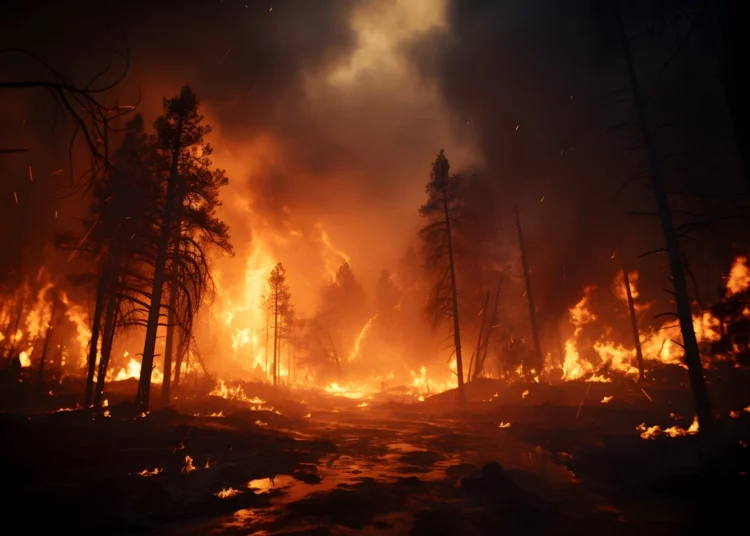According to JP Morgan, the January wildfires caused an estimated $50B in damage in Los Angeles.
AccuWeather cites that “the total damage and economic loss” of the catastrophe could be between $250 and $275B.
The recent Los Angeles wildfires have highlighted the growing challenges faced by everyone involved. As wildfires increase in frequency and intensity, everyone involved is grappling with rising claims costs, shifting risk appetites and the need to balance affordability with financial sustainability.
The most common mistake homeowners make when they attempt to reduce their costs is to underinsure their property.
What’s even worse? Even homeowners who believe they are adequately insured to rebuild after a fire often learn that, because things have changed, they are not fully covered to be able to rebuild. It’s not necessarily anyone’s fault. Things, times and prices have changed. Unless you increased the amount of coverage you had, and many homeowners are doing the opposite, you are not prepared. That’s because all of the costs involved in rebuilding have escalated: labor, wood, concrete, steel, etc.
How will the California fires impact the industry? Many people ask how the fires will impact the home insurance industry. It’s truly a horrific situation. Mitigation of risks in your area if you are in an area prone to natural disasters is the best way to cope with the rates. To reduce your rates, you may want to consider higher deductibles.
Losing one’s home in a fire is devastating. The first priority is to find somewhere to live. I’ve heard stories of people and their families staying in multiple hotels, finally finding a place to rent for the long term weeks later. Others have moved to other counties or states.
The rest of the country is starting to have California’s problems. And they’re not ready.
Wildfires were once considered a West Coast problem. Now they’re a burden for the East Coast, too.
Other areas of the country often like to make fun of California for its ineptitude on many fronts. But if they’re smart, they’ll turn to us for guidance here. California certainly does not have all the answers when it comes to wildfires or the hazardous smoke they generate. But we’re better prepared than most.
As each year brings new challenges, everyone nationwide needs to start preparing for the unexpected.
Everyone who owns a home/property needs insurance. It’s likely the greatest asset they will ever own. Think of it this way- would you spend 1% of the cost of your stock portfolio to assure its value will never go down? That’s essentially what you are doing when you buy homeowners insurance.
Insurance rates are on the rise. There’s no real average rate. The cost per million dollars of coverage is largely dependent on the expected costs to rebuild. That, too, is on the rise, largely due to the increased costs of materials and labor.
Think about it this way: if you are at your office and your home is totally destroyed, the only pair of shoes you’ll own are the ones you are wearing. It’s both poignant and painful. Powerful when thought of in that context. A valuable lesson indeed. And one you don’t understand until you’ve gone through it. Or watched others do so.
Currently, WOWS has expanded to lead the charge to bring additional insurance carriers back into California. The solution is to spread the risk.
With WOWS Insurance LLC, each company will hold a portfolio of California homes, diversified by location. This allows WOWS to make a really unique offering that lowers the risk to the reinsurers. So premium charges can be reduced over time. Properties will be grouped together so the homes in each portfolio have similar fire scores and values. WOWS has identified over 293 different areas in California alone within its risk profile, with no more than one home from each area in each portfolio.
It’s been able to show that, from an actuarial standpoint, even if it’s the highest of high fire scores, the spread of risk is significantly more important than the fire scores themselves.
WOWS Insurance Services’ plan is to expand beyond California to eight western states, highlighting those states like Nevada, Washington, Oregon, Utah and Colorado that all face similar wildfire risk. Their insurance markets are three to five years behind the California market.
Importantly, the WOWS program is fully transferable from home sellers to buyers, something that numerous realtors believe makes the policy an asset of the property. This is an industry first and major California realtors have said that being in the program could boost a property’s value.
WOWS will be stabilizing the market because when you make the policy fully transferable from sellers to buyers you’re taking the fluctuation out of the market. Right now, there are two problems. Consumers are not sure if they are going to get a renewal, and they don’t know if the premium is going to double or triple overnight. WOWS solves both of these problems.
Learn more about WOWS Insurance Services at https://wowsinsurance.com/.

 More about Robert Feldman
More about Robert Feldman










